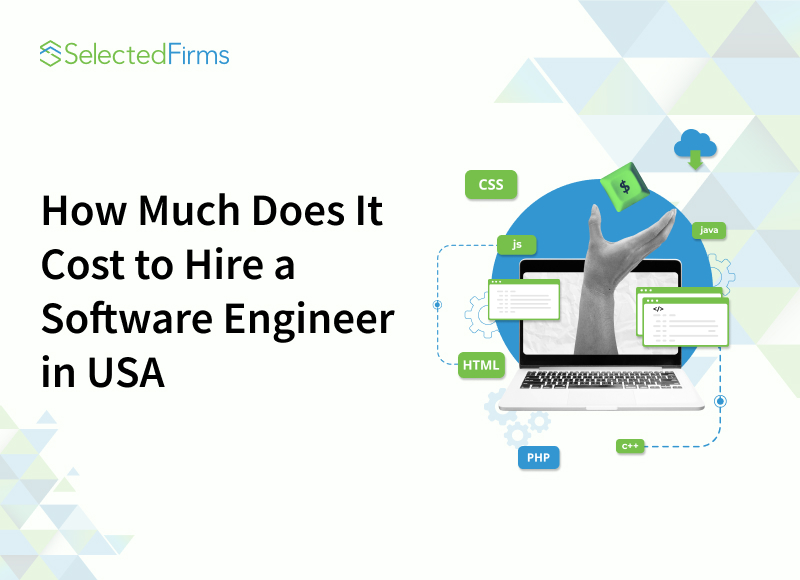Table of Contents
Uncover the benefits of data-driven workforce management solutions, from improved analytics to smarter scheduling, driving success in your organization.

Effective workforce management is even more critical in this ever-fast-paced, increasingly digital business environment. A data-driven employee management system gives an organization the power to drive better productivity, streamline operations, and arrive at the most informed decisions. Firms are eager to innovate new ways of resource allocation and schedule planning, ensuring compliance and, at the same time, driving engagement and satisfaction among their employees.
By applying data analytics, organizations can gain insights that were previously inaccessible to them and thus enable them to optimize the performance of the workforce and stay competitive in the dynamic market. This article will look into the many advantages of Data-driven employee management systems and how they can change how businesses function today.
Better Decisioning with Analytics
One of the key benefits of adopting a data-driven employee management system is making much better and more well-informed decisions. This enables the manager to spot various trends and patterns in employee performance, attendance, and productivity by collecting data about their performance. This can also provide insight into the types of work certain employees do best, at what time of the day productivity is most high, and how resources could be better utilized.
Thus, these analytics allow managers to optimize staffing levels, observe areas where their performance remains poor, and apply corrective measures towards overall operational efficiency. Many industries now use specialized management software to streamline operations. Companies in the storage sector, for example, leverage self storage management software to automate billing, track occupancy, and optimize facility management through data-driven insights

Increase in Employee Scheduling and Efficient Resource Utilization
Scheduling remains one of the most important factors in workforce management because it covers productivity and operational efficiency on a touch-and-go basis. Traditional employee scheduling methods always involve inefficiencies like overstaffing or understaffing, which can adversely affect business operations.
Therefore, a data-driven employee management system allows organizations to harness the power of historical data in an effort to project more accurate staffing needs. Businesses can recognize where resources should be allocated to ensure staffing of the proper amount at the right times through the analysis of trends in the past and the use of forecasts of the future. With this greater level of accuracy comes the benefit of reduced overtime and idle time costs while meeting customer demand expediently.
Increased Productivity and Efficiency
Real-time data will help businesses track the ongoing performance and productivity levels of employees at work. Workforce management solution leaders enabled by data can track how many different tasks are taken, what the bottlenecks are, and who the star employees are when performing their specific job functions. The data collected in this regard can be utilized to bring efficiencies into workflows and make improvements.
For example, if data shows that certain employees are more productive at specific times, managers can schedule them accordingly to maximize output. If the system identifies that employees are falling behind in specific tasks, it can help managers determine who needs additional training and how much to invest in employee education and certification programs. Programs such as the Microsoft MS-102 Practice Test can help employees develop critical skills that improve overall productivity and efficiency.
Cost Reduction and Budget Optimization
Data-driven employee management systems are crucial in helping reduce operational costs. Real-time labor cost monitoring enables managers to identify areas for cost savings, such as adjusting staffing levels or eliminating unnecessary overtime. These solutions also allow for better forecasts of future labor costs, enabling businesses to budget more accurately.
For example, predictive analytics can anticipate periods of high demand weeks or even months in advance; this enables organizations to distribute resources more appropriately and avoid expensive last-minute staffing adjustments. Data insights identify underperforming areas of the enterprise, pointing at timely interventions that reduce waste and optimize budgets.
Better Compliance with Labor Laws and Regulations
Compliance with labor laws and regulations is one major concern for organizations; it mostly applies to industries with complicated workforce requirements. A data-driven employee management system supports businesses in maintaining compliance through real-time tracking of labor laws, overtime rules, and employee hours. These solutions can automatically notify managers where employees are approaching overtime limits or when scheduling conflicts arise that could result in non-compliance.
Moreover, records of employee hours and attendance are usually in-depth for such systems and might be all that is necessary in case any labor dispute or audit arises. Data-driven employee management systems minimize the possibility of facing penalties and protect the company's reputation by assuring compliance.
Engagement and Satisfaction of Employees
Engagement is a key element of workforce productivity and talent retention. A data-driven employee management system will allow organizations to schedule around employee preferences that drive job satisfaction. Solutions will enable employees to request shifts and/or trade shifts with colleagues, providing greater flexibility and work-life balance.
Besides, real performance and productivity data can extend personal feedback and recognition even more to boost employee morale. By offering a more responsive and supportive work environment, the company will benefit from improved employee retention and lower turnover rates.

Better Forecasting and Workforce Planning
Effective workforce management means managing the current workforce and forecasted needs. Data-driven staffing solutions provide predictive analytics to estimate future labor needs based on historical data and emerging trends. This allows businesses to effectively forecast and plan for peaks, seasons, and long-term growth.
In doing this, organizations can circumvent the pitfalls of under- and overstaffing and have the correct number of employees at the right time to meet demand. Due to such foresight, the enterprise can then avoid disruptions and ensure operational continuity.
Improved Employee Performance Management
One key demand for long-term success involves employee performance management. A data-driven employee management system offers a great deal of information related to the performance of individuals and teams; therefore, managers can identify top achievers and employees needing further training.
Furthermore, such systems can track key performance indicators, such as sales figures, task completion rates, and customer satisfaction scores, based on which managers can make informed decisions about promotions, bonuses, and training opportunities. Secondly, feedback linked with regular performance data helps staff understand their strengths and weaknesses, thus enabling continuous organisational development and growth.
Simplified Attendance Tracking and Payroll Management
Managing workforce attendance and payroll is one of the most time-consuming tasks. HRMS tools simplify the process by automating employee hour recordings, absences, and wage calculations through data-driven solutions.
An example could be including a facial recognition time clock in your system to give you appropriate and effective attendance tracking without any human intervention. This automation eliminates several possibilities of human error and prevents the staff from getting paid on time and correctly.
Smoothing attendance and payroll processes saves hours and resources for the business but allows for the proper data recording for auditing purposes.
Enhanced Collaboration Across Departments
Workforce management solutions powered by data enhance collaboration across departments since it is a central site where managers and team leaders access real-time data about their workforce. This kind of transparency enhances decision-making and helps the various departments keep in tune with the organizational vision.
For example, HR, finance, and operations teams can better cooperate by sharing data on staffing needs, labor costs, and productivity metrics. The level of collaboration will work to create greater overall operational efficiency and ensure that the organization is working toward a common objective.
Scalability and Adaptability for Growing Businesses
As businesses grow, so do their workforce management needs. A data-driven employee management system offers scalability and flexibility in light of fluctuating business demands. It can accommodate an expanding workforce, intricate scheduling requirements, and increasing regulatory compliance demands.
Moreover, it can be tailored to fit various industry-specific and business model-specific unique and ever-changing needs. This makes data-driven solutions an ideal choice for businesses that scale operations to sustain efficiency and productivity.
Real-Time Insights to Proactively Manage
One key benefit of workforce management solutions, which is greatly driven by data, is real-time insights. Without dependence on historical data or periodic reports, managers can track the workforce's actual performance, attendance, and productivity. Real-time data enables proactive management to quickly change scheduling, resource planning, and workflow whenever necessary.
Suppose there would be an unplanned increase in demand; managers could change staffing levels immediately to meet the needs of the business. Immediate actions over changes keep businesses agile and competitive in today's world with rapidly changing events.
Conclusion
Data-driven employee management systems are the way to go, offering a gamut of benefits to each business through the optimization of operations, cost reduction, and people satisfaction. Along with analytics comes better decision-making, enhanced productivity, and labour compliance for an organization. The solutions also extract useful insights for future workforce planning and performance management to help businesses stay competitive and nimble in a marketplace that is constantly evolving.
Thus, a data-driven employee management system can transform the way an organization manages its most valuable resource people through better scheduling, smooth attendance tracking, and a more collaborative environment. With facial recognition time clocks and real-time data insights, businesses can take workforce management to the next level and achieve success assured to last.
Author Bio:
Daan Wolff is the CEO and founder of BoldData, a leading provider of B2B abd B2C business data. With over 20 years of experience, he specializes in data-driven strategies for global lead generation.









